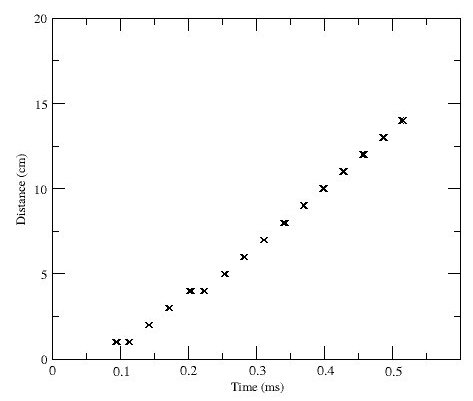Velocity of Sound
In this experiment,
we use a pair of 40 KHz piezo electric crystals to study the
propagation of sound in air. We apply a 5 volts pulse, 13 microseconds
wide, to the transmitter piezo to make it undergo mechanical vibrations
to generate a 40 KHz sound wave. The receiver piezo kept at a distance
converts this sound waves back into electrical signals. These are
amplified by two inverting amplifiers in series, each with a gain of
100, and displayed. By changing the distance between the crystals we
can observe the change in time sound takes to travel from one to the
other, as shown in the screen shot below.
The amplified waveform can also be
applied to a Digital Input of Phoenix to measure the time more
accurately, The schematic for this is shown below.
One can do this experiment from the GUI or using the python
program piezo.py. The
time measurement at each distance should be repeated several times and
a histogram should be plotted to find the mean value. Values differ
from the mean value by around 25 microseconds should be ignored since
there are caused by adjacent raising edges. Measure the time for
several values of the distance and plot the graph. Slope of the graph
dS/dt, taken from any linear portion, gives the velocity of sound.



